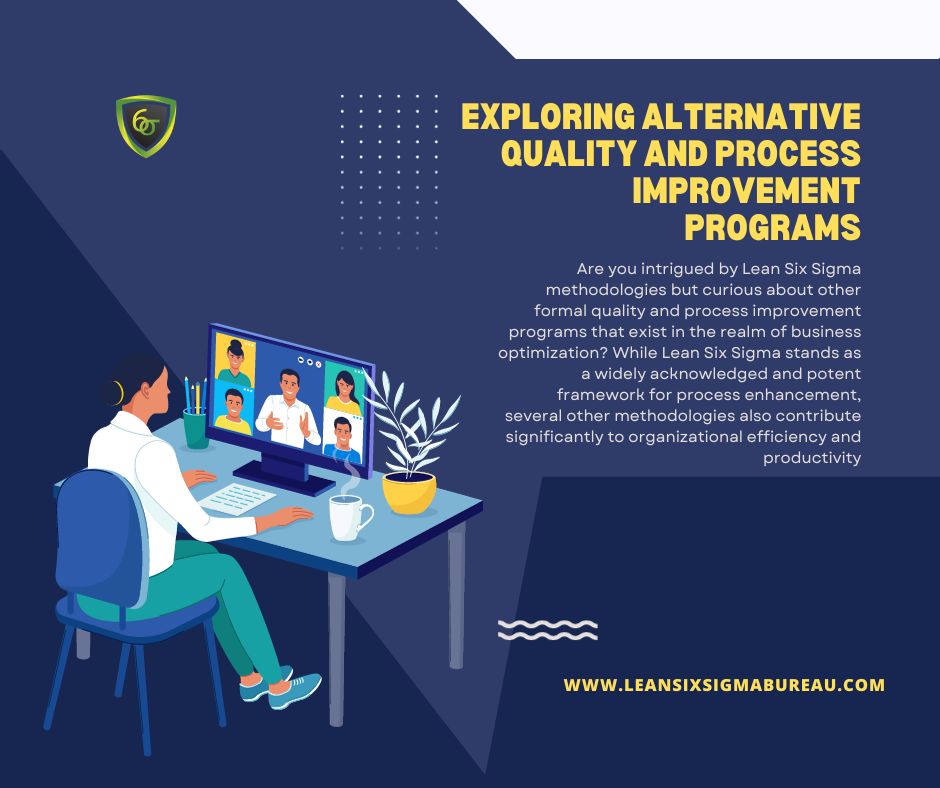Are you intrigued by Lean Six Sigma methodologies but curious about other formal quality and process improvement programs that exist in the realm of business optimization? While Lean Six Sigma stands as a widely acknowledged and potent framework for process enhancement, several other methodologies also contribute significantly to organizational efficiency and productivity.Let’s delve into some noteworthy quality and process improvement programs that complement or stand as alternatives to Lean Six Sigma:
1. Total Quality Management (TQM)
Originating in the 1950s and gaining prominence in the 1980s, TQM emphasizes a holistic approach to quality management. It revolves around continuous improvement, customer focus, and the involvement of all employees in the quality process. Unlike Lean Six Sigma’s emphasis on data-driven decision-making, TQM emphasizes a broader cultural shift within the organization.
2. Kaizen
Kaizen, a Japanese term meaning “continuous improvement,” is centered on making incremental changes regularly. This philosophy emphasizes small, manageable steps to enhance processes. It encourages employee involvement and empowers teams to identify and implement improvements continually.
3. Agile Methodology
Initially developed for software development, Agile has found applications beyond its original scope. It values flexibility, collaboration, and iterative development. Agile fosters adaptability to change and customer feedback, aligning closely with Lean Six Sigma’s principles of continuous improvement.
4. Theory of Constraints (TOC)
TOC identifies the most critical limiting factor (constraint) in a system and focuses on improving it to achieve overall process improvement. It aims to maximize throughput by addressing bottlenecks strategically.
5. Business Process Reengineering (BPR)
BPR involves a radical redesign of business processes to achieve substantial improvements in cost, quality, speed, and service. Unlike Lean Six Sigma, which focuses on incremental changes, BPR often involves a complete overhaul of existing processes.While Lean Six Sigma offers a structured approach with its DMAIC (Define, Measure, Analyze, Improve, Control) methodology, exploring these alternative programs can broaden your perspective on process improvement. Organizations often combine elements from various methodologies to tailor an approach that best suits their specific needs and goals.In conclusion, understanding these other formal quality and process improvement programs alongside Lean Six Sigma can equip professionals with a more comprehensive toolkit to drive organizational excellence. Each methodology brings its unique strengths, enabling businesses to adapt and thrive in dynamic environments.Continuously exploring and learning about these methodologies can contribute significantly to personal growth, career development, and overall business efficiency.Discovering the right blend of methodologies aligned with your organizational objectives can pave the way for sustained success in removing waste, enhancing productivity, and fostering a culture of continuous improvement.Keep exploring, keep learning, and keep improving!


